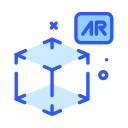Picture this:
You sell phone cases and offer a wide variety on your online store. A shopper visits your site looking for a specific phone case. They browse through multiple categories, struggle with irrelevant search results, and leave frustrated without making a purchase.
This isn’t just one lost sale – it’s a warning sign that you might be losing countless potential customers despite having the products they need.
The culprit?
Poor categorization and navigation structures. Research shows that 61% of website users expect to find what they’re looking for within just 5 seconds. When users can’t find what they want quickly and efficiently, they’ll quit your website and move to a competitor. As a result, sales plummet and customer loyalty fades.
The solution? A well-designed product taxonomy. It’s not just about organization; it’s about crafting a seamless shopping experience that drives sales and builds lasting customer relationships.
Product Taxonomy 101: What is it and Why Do You Need it?
Let’s reconsider the above example:
Imagine someone visiting an online store in search for a black iPhone case. Instinctively, they go to Phones -> iPhones -> Accessories but they don’t see any listing for covers. When they type a query in the search bar, the results include case covers for all iPhone models, not just the one they’re looking for. They spend the next minute scrolling through the dozens of items until they find it on Page 2. This is an example of a very patient browser, which, by the way, is quite rare these days.
If you’re the owner of this eCommerce store, expect most customers to leave in frustration without making a purchase. You’ll be losing sales and revenue fast. If your customers can’t find the product, they can’t buy the product. It’s as simple as that.
Here’s the kicker: it’s not uncommon for eCommerce platforms to have disparate product listings or categorization problems. And while it’s understandable as product data is challenging to categorize because of its complex and diverse nature, it’s also avoidable. A well-planned product taxonomy can make all the difference here. You could have the best of both world – high sales and happy customers – if your site can help consumers find relevant product easily. Product taxonomy does just that.
What Exactly is a Product Taxonomy?
A product taxonomy is a logical, hierarchal structure used to organize products in a way that makes navigation easy for consumers. Similar to how a retail store groups products by category, an online store’s product taxonomy helps shoppers find relevant information/product quickly and easily.
The fundamental purpose of a product taxonomy is to improve customer experience & in the process, also making it easier for store owners to manage their product data.
A well-designed product taxonomy consists of two essential components:
1. Categories:
These are broad groups into which common products are classified. For instance, “Phones” would be the product category into which all phones will be grouped. In product taxonomies, each specific category is organized in a hierarchy to simplify navigation.
Example:
Home -> Phones -> Android -> Samsung
Home -> Phones -> Apple -> iPhone
2. Attributes:
These are additional characteristics that help qualify products within the same category. For phones, attributes might include brand, model, storage (e.g., 64GB or 256GB), display size, and camera resolution, just to name a few.
Some products may even require a third, value list based on the attributes. For example, under the category of iPhone X, the attribute “Color” might have a value of “Pink.”
iPhone X -> Color -> Pink
Understanding the relationship between these three components – categories, attributes, and values (whenever present) – is essential for building an accurate and effective product taxonomy design.
The Purpose of a Product Taxonomy
A fancy website, year-round promotions, and all the glamor in the world cannot make up for a site that lacks a specific structure. In an age when consumers want instant information at the touch of the screen, they cannot be made to wait. If a user doesn’t find your product the moment they are on your website, you’ve lost them. This is why product taxonomies are so important. They combine product information with consumer browsing habits to create an efficient navigational structure.
While optimal consumer experience is the basic purpose of a product taxonomy, it is also beneficial to product data management – it helps merchants store, organize, and manage their product data with ease. Merchants don’t have to go ballistic organizing their data every time they need to run an audit or work with vendors and suppliers.
Organized product data is not just beneficial to customers but also to product owners. It not only enhances the user experience but also simplifies internal processes. Having a well-planned taxonomy as part of your internal company structure also facilitates smoother collaborations among product management teams and other departments. This ensures consistency and efficiency across the board.
Product Data and Product Taxonomy
When merchants conduct activities like supplier and vendor comparisons or catalog data review or classification of items sold for reporting or tax purposes, they will need accurate product data. This is where a well-defined product taxonomy becomes essential.
Far too many merchants get trapped in a complex maze of product data. They are unable to extract relevant insights or define data elements that suppliers need to provide. Moreover, they also struggle to verify information when they receive inconsistent data from suppliers.
A product taxonomy works not just as a structure, but also as a framework for ensuring product data quality.
For instance, when a merchant can classify their products according to a well-defined hierarchy, they will also be able to identify missing elements, duplicate product listings, and evaluate the quality of information they have for each product. This organizational structure also aligns with Google product categories, and allows products to be categorized in a way that enhances visibility across search engines and make it easier for potential customers to find relevant products.
Furthermore, with a well-built product taxonomy, the team will not have to extract multiple Excel sheets and ponder over every field to ensure consistency at the time of an internal audit, a catalog review, or an annual report. A product taxonomy can very well be considered as an automation process that takes care of data quality and management. Once a hierarchy is defined, it’s all about adding new products to the list without having to define everything again.
Why Create a Taxonomy? I Already Have Product Categories Sorted
Merchants classify product categories intuitively. It’s obvious that an accessory for phones should go into the Phone category, but what if you have separate tabs for Accessories? Which of the following do you think would be the best choice?
Home -> Tech -> Phones -> Accessory
Home -> Phones -> iPhones -> Accessories
A classification like this cannot be done intuitively and if you are simply just grouping items together without considering product taxonomy, you’re creating a world of chaos for yourself and your consumer. Therefore, to create an effective taxonomy, you have to understand both your consumer and your product data.
Let’s turn our attention to product data.
Product data is generally unstructured data, made of long and short descriptions (e.g., Samsung Note 10 Black 256 GB) and storing it in a spreadsheet with just this description does nothing to help with the product classification.
To effectively categorize your products, you need to break this structured data down to the item and attribute level, so you can easily classify information.
For instance, if you break down a description like “Samsung Note 10 Grey 256 GB 6.3,” you now have four components: Brand name, Model, Color, and Storage capacity.
Now, when a user specifically wants a phone with a screen size of 6.3”, they’ll get all the products listed according to this size which will also include Note 10 if you’ve classified it according to screen size. If the user ends up buying the Note 10 without having thought of it, you’ve succeeded in helping them make a purchase based on one key spec.
A product taxonomy is equally valuable for search engines and category browsing. If a user is performing a keyword search, the product taxonomy components act like filters or refiners that help clarify the search result. This example is just a basic overview of what can be achieved when product listings and categorization are done according to defined rules. By organizing your products with a clear sales product taxonomy, you ensure that shoppers can quickly find the items they want, whether through direct category navigation or refined search queries.
How Does a Product Taxonomy Increase Sales?
This is the big question. Is all this effort of creating taxonomies worth it?
Absolutely.
The data says it all.
- Poorly architected retailing sites sell 50% less than organized sites.
- 40% of employees or knowledge workers cannot find the information they need on data sources
- 68% of companies we’ve worked with spend time cleaning duplicate product data information
Put simply, an organized product data structure benefits your consumer, your staff and your store.
Think about it.
Every hour your team spends in manually reviewing, cleaning or removing duplicate records from your database is an hour wasted. It increases operational costs but does not contribute to ROI. A taxonomy, in this case, can improve productivity and also customer service by helping employees find information faster and more reliably.
Every minute the user spends in navigating your site to find for their product is a massive lost sale figure for your business. Imagine a user leaving your site to make a $$$$ purchase at another site. Imagine this user who may also be a frequent online buyer making up their mind not to buy from you. These problems directly impact your sales and revenue.
It’s also important to understand that visitors to your site may not necessarily be determined buyers. Most people are browsers who don’t exactly know what they’re looking for. They might want to browse different categories and attributes. They would also want a list of alternative selections. A well-built taxonomy will allow your site to display related products and enable the user to make a purchase even if what they are looking for may not be available. Instead of losing a sale, you’re getting a conversion by offering an alternative.
Conversions and sales don’t only happen at the time of consumer activity. It also happens as a result of accurate insights, analytics, and reporting. When you have accurate information on your product, it’s well classified and categorized, you can focus on acquiring deeper insights or finding hidden opportunities. You can even conduct product and catalog match activities at an item level. Say you want to match purchased items against several suppliers to determine which supplier can give you the best rate. You can also match items sold to specific classification standards for reporting and tax purposes. If the data is not classified, you’re spending millions of dollars in taxes.
How Do I Begin with Creating a Taxonomy?
The big guns of the retail world employ taxonomists to sort their product data. But that’s not possible for the average company. What do you do then?
Luckily, there are enterprise solutions available that can help you sort and classify data, while making a hierarchy for your products. Data Ladder’s ProductMatch is one such enterprise-level, automated solution that lets you take control of your data by allowing you to implement:
- A taxonomy – build category tree structures and defining attributes
- Data governance – monitor newly entered or imported product data for compliance
- Product information management – match, merge and standardize the data to get a single source of truth
- Data migration – from lower to higher versions
- Cleansing and normalization – fix product descriptions according to a defined structure
- Competitor analysis – extract competitor lists to analyze product price
Here’s how your product taxonomy would look using ProductMatch.

King Fisher – A Case Study
Kingfisher plc is an international home improvement company with 1,302 stores in 10 countries across Europe, Russia, and Turkey, supported by a team of 79,000 colleagues.
The company offers DIY and home improvement products and services to nearly six million customers who shop in-store and via online channels every week.
Their customers are everyone wanting to improve their home, as well as the experts and trade professionals who help them.
Kingfisher faced two challenges in terms of product data management:
- Merge different platforms (394K products in total) in order to have a uniform set of attributes between all products.
- Categorize all products to an internal set of product codes. This involved categorization and analysis of where there were inconsistencies.
ProductMatch™ was able to derive a hierarchy in Excel and import over 60K lines of attributes and categories. This, in turn, was used to categorize 394K records of unstandardized product data. Once the data was categorized, ProductMatch™ matched duplicate products and enriched the data between the match group members (duplicate products).
ProductMatch™ implemented King Fisher’s internal product codes as a hierarchy and classified the same 394K products. PM™ was then able to see which products had been incorrectly classified in their SAP system. By using the classification module, King Fisher was able to correct thousands of misclassified products.
Conclusion – Organize Product Data to Enhance Customer Experience Leading to Increased Sales and Revenue
It’s a ripple effect.
Bad product data classification causes bad consumer experiences leading, poor internal productivity, leading to poor sales and growth.
Conversely, well-built product taxonomy leads to enhanced customer experience, optimal productivity, leading to increased conversions, sales and consumer loyalty.
What do you want for your business?
Let us walk you through how our platform can help you make sense of your product data. Book a demo today.
If you’re wondering about our customer success, here are some numbers:
- 5% increase In Market Share.
- 2% increase in Price.
- 10% increase in online conversions.
- 2.5% increase in online add-on product sales.
- $2.1 million increase net profit in first year.
Let’s get you the numbers you need. Contact us today to start your journey towards success.










































